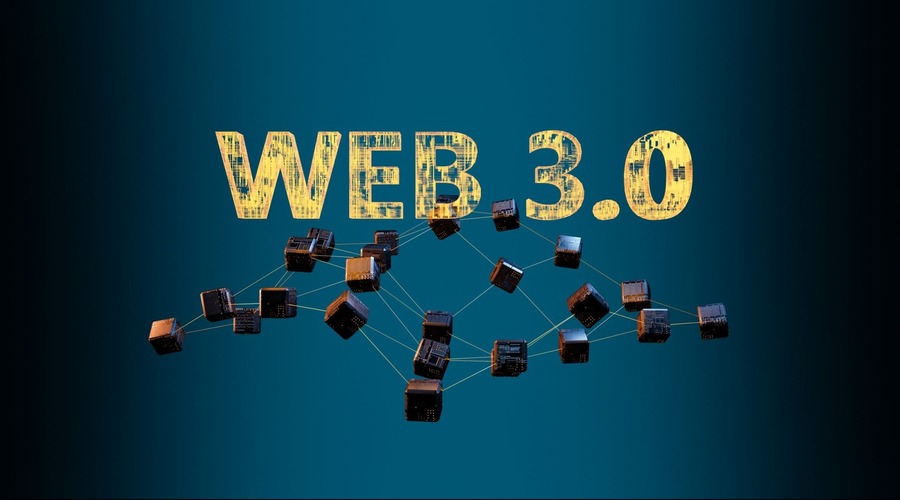The Role of Distributed Ledgers in Web 3.0

The Role of Distributed Ledgers in Web 3.0
The evolution of technology has brought about significant changes in the way we interact with the internet. Web 3.0 is the next generation of the internet that is expected to revolutionize the way we communicate and conduct transactions online. Distributed ledgers are a critical component of this new internet, and they play an essential role in the creation of a more secure and decentralized web. This article will explore the role of distributed ledgers in Web 3.0, including their benefits, challenges, and future implications.
What is Web 3.0?
Web 3.0 is the next phase of the internet, also known as the “decentralized web.” It aims to create a more secure, private, and decentralized web leveraging new technologies such as blockchain, distributed ledgers, and artificial intelligence. Web 3 is designed to provide a more immersive and personalized web experience allowing users to have more control over their data, identity, and digital assets.
The Role of Distributed Ledgers in Web 3.0
Distributed ledgers are a crucial component of Web 3.0, as they provide a secure and decentralized platform for storing and managing data, transactions, and digital assets. A distributed ledger is a database that is replicated across a network of computers, where each computer has a copy of the same data. These ledgers use consensus algorithms to ensure that all copies of the database are in sync and cannot be altered any single entity.
Benefits of Distributed Ledgers in Web 3.0
- Decentralization: Distributed ledgers provide a decentralized platform for storing and managing data, transactions, and digital assets. Unlike traditional databases that are controlled a single entity, distributed ledgers are replicated across a network of computers, making it difficult for any single entity to control or manipulate the data.
- Security: Distributed ledgers provide a high level of security using consensus algorithms to ensure that all copies of the database are in sync and cannot be altered any single entity. This makes it virtually impossible for hackers to manipulate the data, as they would need to hack into multiple computers simultaneously.
- Transparency: Distributed ledgers provide transparency allowing users to view all transactions that have occurred on the network. This helps to create a more trustful and accountable environment for conducting transactions.
- Efficiency: Distributed ledgers provide a more efficient platform for conducting transactions, as they eliminate the need for intermediaries such as banks, clearinghouses, and other third parties. This helps to reduce transaction costs and improve the speed of transactions.
Challenges of Distributed Ledgers in Web 3.0
Despite the benefits of distributed ledgers, there are still several challenges that need to be addressed to make them more practical for Web 3.0. These challenges include:
- Scalability: Distributed ledgers are currently limited in their scalability, as they require significant computing power to operate. This can make handling large volumes of transactions difficult, which is essential for Web 3.0.
- Interoperability: Distributed ledgers are currently not very interoperable, as there are many different types of ledgers, and they do not always work well together. This can create challenges when trying to create a seamless and integrated web experience for users.
- Regulation: Distributed ledgers are still relatively new and are not yet well-regulated. This can create challenges when trying to integrate them into existing legal and regulatory frameworks.
Distributed Ledgers vs. Centralized Databases
Distributed ledgers are a significant departure from traditional centralized databases, which are controlled a single entity, such as a company or government agency. Centralized databases are inherently vulnerable to attacks or data breaches, as the data is stored in a single location and can be manipulated a single entity. In contrast, distributed ledgers are more secure and decentralized, as the data is replicated across multiple computers in the network, making it nearly impossible for any single entity to control or manipulate the data.
Another key difference between distributed ledgers and centralized databases is the way that transactions are processed. In a centralized database, transactions are processed a single entity, such as a bank or payment processor. This can result in delays, as the transaction must be approved the central authority. In contrast, distributed ledgers use consensus algorithms to process transactions, which means that each computer in the network must agree on the validity of the transaction before it is recorded on the ledger. This process is faster and more efficient than traditional centralized systems.
Types of Distributed Ledgers in Web 3.0
There are several types of distributed ledgers, each with its own unique features and benefits. The three most common types of distributed ledgers are:
- Blockchain: Blockchain is the most well-known type of distributed ledger and is the underlying technology behind cryptocurrencies such as Bitcoin and Ethereum. A blockchain ledger consists of a chain of blocks that contain a record of all transactions that have occurred on the network. Each block is linked to the previous block, creating an immutable and tamper-proof ledger.
- Directed Acyclic Graph (DAG): DAG is a type of distributed ledger that uses a directed graph to store transactions. Each transaction is represented as a node in the graph, and each node is connected to several other nodes, creating a network of transactions. DAGs are designed to be more scalable than blockchain ledgers, as they can process multiple transactions simultaneously.
- Hashgraph: Hashgraph is a newer type of distributed ledger that uses a consensus algorithm called gossip to process transactions. In a hashgraph ledger, each transaction is represented as a hash and is stored in a data structure called a hashgraph. The hashgraph is then used to calculate the consensus on the validity of each transaction.
Applications of Distributed Ledgers in Web 3.0

Distributed ledgers have numerous applications in a wide range of industries, including finance, healthcare, supply chain management, and more. One of the most significant applications of distributed ledgers is in the area of finance, where they are being used to create more secure and efficient payment systems. Distributed ledgers can also be used to create new types of financial instruments, such as smart contracts, that can automate the execution of financial transactions.
In healthcare, distributed ledgers can be used to create more secure and transparent systems for managing patient data. By using distributed ledgers to store patient data, healthcare providers can ensure that the data is accurate, up-to-date, and can only be accessed authorized parties. Additionally, distributed ledgers can be used to create more efficient systems for tracking the supply chain of medical devices and drugs.
In supply chain management, distributed ledgers can be used to create more transparent and efficient systems for tracking the movement of goods. By using distributed ledgers to store information about the origin and movement of goods, businesses can create a more accurate and reliable supply chain that is less susceptible to fraud and errors.
Distributed Ledgers and Privacy
One of the key features of distributed ledgers is their ability to maintain privacy and anonymity. Unlike traditional centralized databases, where personal information is often stored in a single location, distributed ledgers allow users to maintain control over their data and keep it private.
Distributed ledgers can be used to create more secure and private systems for storing and sharing personal information. For example, in healthcare, distributed ledgers can be used to create more secure and private systems for storing patient data. Patients can maintain control over their data and choose who can access it, which can help to reduce the risk of data breaches and unauthorized access.
Similarly, in finance, distributed ledgers can be used to create more secure and private systems for storing financial information. By using distributed ledgers to store financial information, users can maintain control over their data and keep it private. This can help to reduce the risk of identity theft and fraud.
Distributed Ledgers and Interoperability
One of the key challenges of distributed ledgers is interoperability. As there are many different types of distributed ledgers, they do not always work well together, which can create challenges when trying to integrate them into existing systems.
To address this challenge, several initiatives have been launched to create more interoperable distributed ledgers. For example, the Hyperledger project is an open-source initiative that aims to create a modular framework for building distributed ledger applications. The goal of the project is to create a more standardized and interoperable ecosystem for distributed ledgers.
Conclusion
In conclusion, distributed ledgers are a critical component of Web 3.0 and are expected to play an increasingly important role in the future of the Internet. While there are still challenges that need to be addressed, such as scalability, interoperability, and regulation, the potential benefits of distributed ledgers are significant. As the technology continues to evolve, we are likely to see increased adoption of distributed ledgers in a wide range of applications, including decentralized marketplaces, identity verification, and more.
FAQs
- What is a distributed ledger?
A distributed ledger is a database that is replicated across a network of computers, where each computer has a copy of the same data. These ledgers use consensus algorithms to ensure that all copies of the database are in sync and cannot be altered any single entity.
- What is Web 3.0?
Web 3.0 is the next phase of the internet, also known as the “decentralized web.” It aims to create a more secure, private, and decentralized web leveraging new technologies such as blockchain, distributed ledgers, and artificial intelligence.
- What are the benefits of distributed ledgers?
Distributed ledgers provide several benefits for Web 3.0, including decentralization, security, transparency, and efficiency.
- What are the challenges of distributed ledgers in Web 3.0?
The challenges of distributed ledgers in Web 3.0 include scalability, interoperability, and regulation.
- What is the future of distributed ledgers in Web 3.0?
As the technology continues to evolve, distributed ledgers are likely to become more scalable and interoperable, making it easier to handle larger volumes of transactions and to integrate them into existing systems. Additionally, we are likely to see increased adoption of distributed ledgers in a wide range of applications, including decentralized marketplaces and identity verification.
I’ve been involved with cryptocurrency for three years. I have been a vocal advocate for the people and an active part of the community. I am well-known for my book “Crypto Revolution: An Insider’s Guide to the Future of Money” and blog “The Crypto Chronicles.” In addition, I frequently contribute to CoinDesk, one of the top news websites for cryptocurrencies. I write as well as invest actively in a number of bitcoin initiatives.
